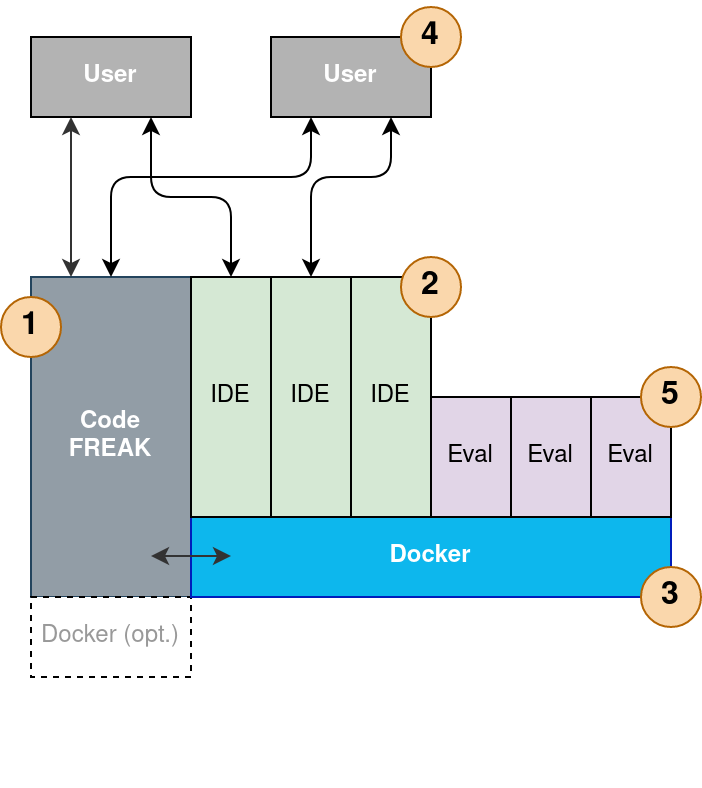System Architecture
| This page is out of date! While the documentation is still correct it misses the new React frontend. |
1. High level overview
Currently, there are five major components:
-
The backend application server based on Spring Boot
-
Individual Online Development Environments (IDE) spawned for each user
-
A Docker daemon controlled by the backend application
-
(Users accessing the application via a React frontend application)
-
Numerous evaluation containers to check students code in isolated environments

2. Backend Application
The Backend Application (app) is the main component of Code FREAK and is written in Java based on Spring Boot. It is responsible for storing all kind of data including users, tasks and results. The app keeps a connection to a dedicated Docker daemon to spin up new containers and pushing/pulling files from that containers. Currently there is no direct communication between the app and containers. All messages are send over the Docker daemon.
It is not required but highly recommended running the application using our official Docker image.
3. IDE
The Integrated Development Environments (IDE) are used by the users to work on the programming tasks. Because each IDE runs in its own container they are isolated environments that offer both flexibility and security. Currently we use Visual Studio Code as IDE based on code-server. The IDE runs directly in the browser of the user and do not require any local setup. Beside the IDE itself the containers contain all required compilers and toolchains (Java, Gradle, nodejs, npm, …) to execute and debug the code directly on the server. Because containers can be limited in RAM and CPU-usage users cannot steal resources from other users.
The files are synced between the browser and the container in real time. The backend application will monitor the IDE container and pull the files from it periodically to store it in a database.
4. Docker Daemon
The Docker daemon is currently used for starting IDE instances (and testing code in the near future). Docker containers allow a good isolation between individual environments by using standard Linux kernel features. The backend app connects via the standard socket or HTTP API the Docker daemon.
If you run the Code FREAK application itself on Docker you should use different daemons for the app and for IDE. Even if the IDE containers are resource-limited, too many IDE containers could consume all available resources on the host and crash the backend application.
Because a single Docker host does not scale very well we plan to support other container orchestration systems in the future.